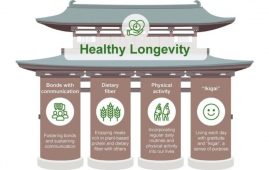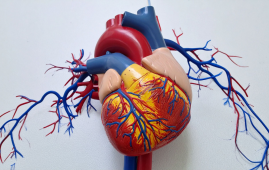

The medical world including hospitals has been embracing new technology. However, the future does not just happen on its own; the present needs to have a vision of what the future might be. And within the health sector there is currently an impressive amount of vision.
Patient wellbeing is influenced not only by the quality of service, but also by the design of the medical institution. Modern hospitals are being built based on the idea of creating the most comfortable conditions for staying in them. Experts consider everything—the colour of walls, the views from windows, the convenient IT-navigation around and inside the hospital complex—so that patients lose the feeling of being in “disease territory” and the NHS has embraced technology like never before.
Let’s review five technologies that are already shaping hospitals and will be integral parts of the healthcare future.
Nanomedicine applies the tools of nanotechnology to the treatment and prevention of illness. It involves the use of nanoscale materials for the delivery of therapeutics (including vaccines), biomarker discovery, bioimaging and for the treatment of neurodegenerative diseases.
There are a number of start-ups around the world with interesting projects, including Israel’s Vecoy Nanomedicines looking to treat viral infections by administering novel nano-scale virus-traps that capture and destroy viruses.
3D Printing
Additive manufacturing is where a digital file is used to create physical objects by adding multiple layers – it is more commonly called 3D printing. The origins of the concept are found in the early 1980s and since then more than a dozen methods or technologies have evolved, with examples of 3D printing in medicine (actual and potential) including: organ and tissue manufacturing; personalised medical equipment; customised implants and prosthetics; anatomical models for education and surgical planning.
California-based Organovo is one of the leaders in the research and development of 3D bioprinting; they have a goal of 3D printing patches made of human tissue for defunct organs and entire organs for transplantation.
Wayfinding
Wayfinding enables patients and other visitors to navigate from outside the hospital all the way to the specific location they need, whether that is a bed on a ward, a consulting room, the café, or the pharmacy.
This saves staff time; many times a day doctors and nurses will be stopped (and therefore delayed) by visitors asking for directions; and often patients are late for appointments as they may lost within the hospital. Indoor Wayfinding solves both these problems.
The technology helps people navigate easier through a hospital as well as giving them a more independent experience. The navigation app can personalize the route, so if you want to avoid the stairs it will show you how, it can also choose the fastest or least busy route for you, plus it can highlight interesting features along the way, for example, it can tell you more about the art on the walls of the corridors.
The use of artificial intelligence (AI) expects to grow rapidly in the healthcare sector. Examples of ways that AI could reduce and/or mitigate risk include: helping to detect high risk patients by identifying those in need of medical intervention and triggering alerts to medical staff; and helping to deliver personalised recommended dosages by factoring in the unique body chemistry and associated environmental factors associated with individual patients.
The UK’s Babylon Health has a patient-centered remote consultation service that, through deep learning, can provide users with personalised insights to help them to better understand their health.
Robotics
Surgical Robots are machines that execute surgical tasks. But they are not autonomous. A (human) surgeon performs the surgery using robotic instruments that they guide via a console. Although tiny wristed instruments move like a human hand, they have a much greater range of motion. The small size of the instruments means surgeons can operate through one (or a few) small incisions, helping with complicated operations by allowing greater precision and flexibility than traditional techniques.
Globally, da Vinci surgical systems is the oldest and most widely used system in this field.
In the UK the NHS has adopted an agile approach to the development and introduction of new technology. It has shown it’s capacity to reimagine what is possible for hospitals – from using video call for healthcare consultations with patients, to Xray diagnostics supported by machine learning algorithms. As well as supporting healthcare workers, embracing the private sector, tackling bureaucracy, and more. By embracing new technologies hospitals can ensure that they will provide better patient care in the future.
more recommended stories
 High-Intensity Training and Oxidative Stress Insights
High-Intensity Training and Oxidative Stress InsightsNew Evidence Linking High-Intensity Training and.
 Perinatal Mental Health Challenges Highlighted in New Study
Perinatal Mental Health Challenges Highlighted in New StudyMental Health Challenges in New Parents:.
 Safer Allogeneic Stem Cell Transplants with Treg Therapy
Safer Allogeneic Stem Cell Transplants with Treg TherapyA new preclinical study from the.
 World Summit Outlines Core Principles for Healthy Longevity
World Summit Outlines Core Principles for Healthy LongevityWhy Healthy Longevity Demands a New.
 Cholesterol-Lowering Drugs May Help Reduce PFAS Levels
Cholesterol-Lowering Drugs May Help Reduce PFAS LevelsPer- and polyfluoroalkyl substances (PFAS) continue.
 AI ECG Model Outperforms Standard STEMI Triage
AI ECG Model Outperforms Standard STEMI TriageNovel AI ECG Model Outperforms Standard.
 WHO and EU Strengthen Digital Health in Africa
WHO and EU Strengthen Digital Health in AfricaThe World Health Organization (WHO) and.
 Quitting Smoking Slows Memory Decline, Study Finds
Quitting Smoking Slows Memory Decline, Study FindsQuitting smoking is linked to slower.
 Breakfast Skipping Linked to Metabolic Syndrome
Breakfast Skipping Linked to Metabolic SyndromeBreakfast Skippers May Face Metabolic Consequences.
 Cancer Cells Learn to Self-Report: A New Frontier in Immunotherapy
Cancer Cells Learn to Self-Report: A New Frontier in ImmunotherapyHow a Drug Complex Enables Immune.

Leave a Comment